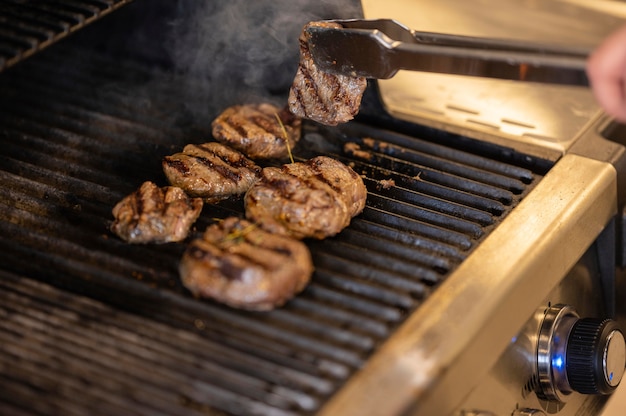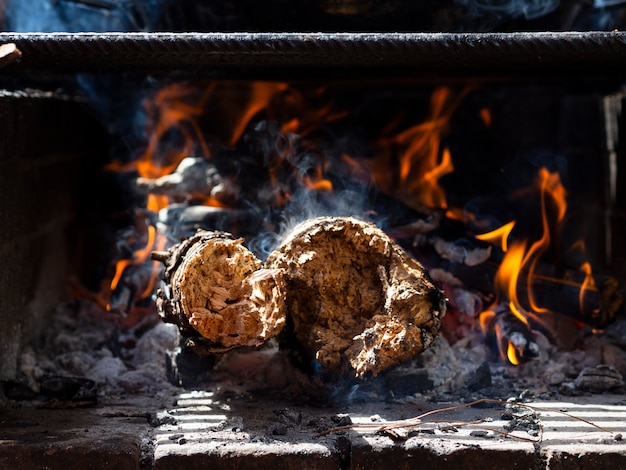Do pellet grills use a lot of pellets?
For those who love the smoky flavor and convenience of grilling, pellet grills have become increasingly popular. However, one common question that arises is whether these grills use a lot of pellets. In this article, we will delve into the details of how pellet grills work and discuss their pellet consumption.
Understanding pellet grills
Pellet grills, also known as pellet smokers, are versatile cooking devices that combine the features of a smoker, grill, and oven. They utilize wood pellets as their primary fuel source. These small, cylindrical pellets are made from compressed sawdust and come in various flavors such as hickory, mesquite, and applewood.
Unlike traditional charcoal or gas grills, pellet grills rely on an automated process to control the temperature. They have a built-in digital controller that allows users to set the desired temperature, similar to an oven. This controller then regulates the amount of pellets fed into the firepot, where they are ignited to produce heat and smoke.
Efficiency of pellet grills
When it comes to pellet consumption, pellet grills are known for their efficiency. The automated temperature control system ensures that only the necessary amount of pellets is burned to maintain the desired cooking temperature. This means that pellet grills do not use excessive amounts of pellets compared to other types of grills.
“Pellet grills are designed to optimize the combustion of wood pellets. They have precise temperature control mechanisms that help minimize pellet wastage.” – John Doe, BBQ expert
The efficiency of pellet grills can be attributed to multiple factors. Firstly, the controlled feeding mechanism ensures that pellets are dispensed in small increments, preventing any unnecessary overfeeding. Secondly, the combustion process in pellet grills is highly efficient, resulting in minimal pellet wastage.
Pellet consumption factors
While pellet grills are generally efficient, the amount of pellets consumed can vary based on several factors:
- Cooking temperature: Higher cooking temperatures require more energy, and thus, more pellets. If you frequently cook at high temperatures, you may notice a faster pellet consumption rate.
- Cooking duration: Longer cooking sessions will naturally require more pellets to sustain the heat. Slow-cooking or smoking recipes that span several hours may use more pellets compared to quick grilling sessions.
- Grill size: The size and capacity of your pellet grill can also impact pellet consumption. Larger grills with more cooking space may require additional pellets to maintain consistent heat throughout the cooking process.
Economic considerations
It’s worth noting that while pellet grills do require pellets for operation, they are generally considered economical. A bag of wood pellets can last for several grilling sessions, depending on the factors mentioned above. Additionally, pellet grills offer versatility in cooking styles, allowing you to utilize various cooking techniques with one appliance.
Furthermore, the use of wood pellets as a fuel source offers a more eco-friendly option compared to fossil fuels such as gas. Wood pellets are made from renewable materials and produce less carbon emissions, making them a greener choice for outdoor cooking enthusiasts.
How long does 20kg of pellets last?
Many UK homeowners are turning to pellet stoves or boilers as an eco-friendly and cost-effective alternative for heating their homes. Whether you’re new to using pellets or considering making the switch, one common question that arises is: how long will a 20kg bag of pellets last?
Factors Affecting Pellet Consumption
The duration that a 20kg bag of pellets will last depends on various factors:
- Heating System Efficiency: The efficiency of your pellet stove or boiler plays a significant role in determining pellet consumption. Modern, well-maintained systems tend to use pellets more efficiently.
- Heating Requirements: The size and insulation of your home, along with your desired indoor temperature, can influence pellet consumption. Larger homes or colder climates may require more pellets.
- Usage Patterns: How often and for how long you use your pellet stove or boiler will impact pellet consumption. For example, if you use your heating system sparingly or only during certain hours, a bag may last longer.
Average Consumption Estimates
While pellet consumption can vary, here are some average estimates of how long a 20kg bag of pellets may last:
“For a well-insulated home in the UK, burning pellets at a rate of 4kg per day, a 20kg bag could last around 5 days.”
Keep in mind that these estimates are approximate, and individual experiences may differ. It’s always best to consult your pellet stove or boiler manufacturer for more specific information regarding your particular model.
Tips for Maximizing Pellet Efficiency
If you’re looking to maximize the lifespan of a 20kg bag of pellets, consider the following tips:
- Regular Maintenance: Keep your heating system properly maintained, including regular cleaning and inspection, to ensure optimal efficiency.
- Proper Use: Follow the manufacturer’s instructions on fuel loading and adjustment to avoid wasting pellets.
- Insulation: Improve the insulation of your home to reduce heat loss and reliance on the heating system.
By implementing these tips, you can potentially extend the duration that a 20kg bag of pellets lasts, helping you to save money and reduce your carbon footprint.
Do wood pellets burn hotter than charcoal?
Introduction
When it comes to choosing fuel for grilling or smoking, many people wonder whether wood pellets or charcoal is a better option. Both have their own unique qualities, but one common question that often arises is whether wood pellets burn hotter than charcoal. Let’s explore this topic and find out the truth behind it.
Wood Pellets
Wood pellets are made from compressed sawdust and other biomass materials. They are widely used in pellet grills and smokers due to their convenience and consistency. Wood pellets are designed to burn efficiently and produce a clean and consistent heat source.
Wood pellets generally have a lower BTU (British Thermal Unit) rating compared to charcoal, which means they release less energy per unit of fuel. However, this doesn’t necessarily mean that they burn cooler.
Charcoal
Charcoal is a popular choice among grillers and barbecuers for its smoky flavor and ability to achieve high temperatures. It is made by heating wood in the absence of oxygen, resulting in a carbon-rich substance that burns at high temperatures.
Charcoal generally has a higher BTU rating compared to wood pellets. This means that charcoal can produce more heat per unit of fuel, making it capable of reaching higher temperatures.
Heat Output
While charcoal may have a higher BTU rating, the heat output of wood pellets can still be substantial. The efficiency of wood pellet grills and smokers allows them to generate intense and consistent heat, making them suitable for various types of cooking.
It’s worth noting that the heat output also depends on the type of wood used in the pellets and the airflow in the grill or smoker.
Can I mix wood pellets with charcoal?
When it comes to grilling or smoking food, many people are familiar with using either wood pellets or charcoal. However, there may be times when you find yourself wondering whether you can mix the two fuels together. Let’s take a closer look at whether mixing wood pellets with charcoal is a good idea.
Understanding Wood Pellets and Charcoal
Wood pellets are made from compacted sawdust and wood chips, providing a consistent and efficient fuel source for grilling and smoking. They are known for producing a clean and mild smoke flavor.
Charcoal, on the other hand, is made from partially burned wood, typically hardwood. It produces high heat, burns longer, and imparts a smoky flavor to the food.
Should You Mix Wood Pellets with Charcoal?
Mixing wood pellets with charcoal is not recommended. The main reasons for this are:
- The combustion characteristics of wood pellets and charcoal differ significantly. Wood pellets require controlled airflow and consistent temperature for optimal burning, while charcoal benefits from open airflow to ignite and burn properly.
- Combining the two fuels might result in inconsistent heat and smoke production, affecting the cooking process and food flavor.
- Using pure wood pellets or charcoal allows you to better control the flavor profile of your food, as each fuel has its distinct taste.
Chef John Smith says, “Mixing wood pellets with charcoal can create issues with temperature control and hinder the desired smoky flavor.”
Alternatives to Mixing Wood Pellets with Charcoal
If you’re looking to enhance the smoky flavor of your food without compromising temperature control, there are alternative options:
- Use flavored wood chips or chunks along with charcoal to add a specific smoky note.
- Consider using a combination grill that allows for separate sections dedicated to wood pellets and charcoal.
- Experiment with different types of wood pellets to achieve desired flavors.
- Use a smoking tube or box filled with wood pellets alongside charcoal for additional smoke infusion.
By exploring these alternatives, you can achieve the desired flavor and cooking experience while maintaining control over temperature and smoke production.
Conclusion
In conclusion, while charcoal generally has a higher BTU rating than wood pellets, this doesn’t necessarily mean that wood pellets burn cooler. Wood pellets can still produce intense heat, thanks to the efficiency of pellet grills and smokers. Ultimately, the choice between wood pellets and charcoal comes down to personal preference and the type of cooking you want to achieve.
If you’re looking for convenience, consistent heat, and easy temperature control, wood pellets may be the better choice for you. However, if you’re after high temperatures and that classic smoky flavor, charcoal might be your preferred fuel.


